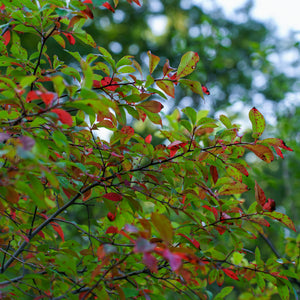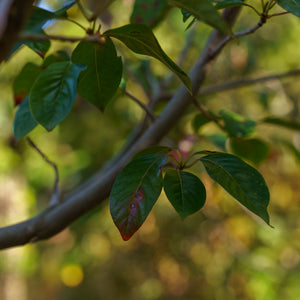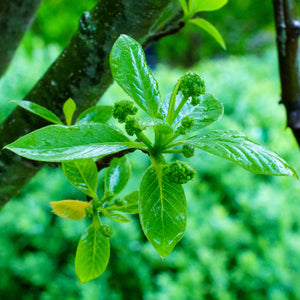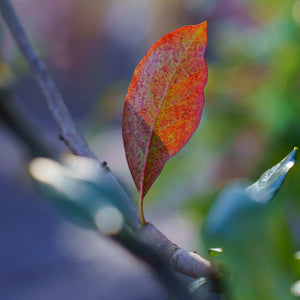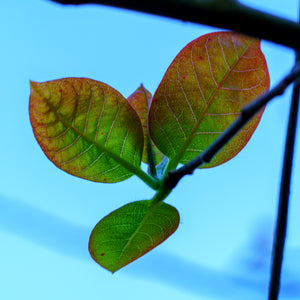The Black Gum Guide
Black Gum trees provide a timeless and eye-catching presence in any landscape. With their unique features, including vibrant fall foliage, textured bark, and a variety of shapes and sizes, Black Gum trees stand out and add a touch of refinement to gardens and outdoor spaces. These versatile trees are known for their ability to adapt, thriving in a range of conditions when given the proper care. Whether you aim to create a tranquil woodland retreat or want a distinctive feature in your garden, Black Gum trees make an excellent choice.
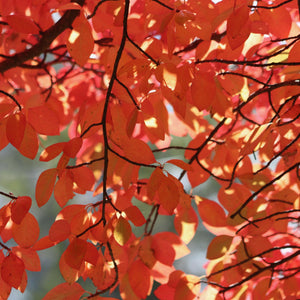
About
Black Gum, part of the diverse Nyssa genus, are a significant component of natural landscapes. With over ten recognized species, these deciduous trees are found throughout temperate regions of the Northern Hemisphere, including North America, Europe, and Asia. Black Gum trees have unique characteristics and play a vital role in supporting local ecosystems.
A notable feature of Black Gum trees is their textured bark, often appearing in shades of grayish-brown, which contrasts beautifully with their foliage. The leaves, usually ovate with smooth edges, present a range of green tones during the growing season. As autumn approaches, these trees undergo a stunning transformation, showcasing a spectrum of warm colors—brilliant yellows, fiery oranges, and rich copper hues.
Ecologically, Black Gum trees are invaluable, providing food and shelter for a variety of wildlife. Their spring flowers, forming in small clusters or catkins, are an essential early pollen source for pollinators like bees. The seeds, encased in distinctive and often textured husks, offer a critical food supply for numerous bird species and mammals.
Black Gum trees are adaptable, thriving in diverse soil conditions and environments. While they prefer moist, well-drained soils, they can succeed in both full sun and partial shade. This adaptability, along with a moderate growth rate, makes them an excellent choice for various landscaping projects.
Whether used as striking focal points, arranged to form windbreaks, or blended into mixed borders, Black Gum trees add a touch of natural beauty and elegance to any landscape. Notable species include the Black Gum (Nyssa sylvatica), known for its distinctive look and ecological importance. By choosing and caring for Black Gum trees in your garden, you enhance its visual appeal while contributing to the preservation of these remarkable trees and the biodiversity they sustain.

Planting
Black Gum have specific planting needs to ensure healthy growth. Follow these general guidelines to plant and care for Black Gum trees:
Soil: Black Gum trees thrive in well-draining soil rich in organic matter. They prefer slightly acidic conditions, with a pH between 6.0 and 7.0. To prepare the planting area, loosen the soil and add compost or organic matter to improve drainage and fertility.
Sunlight: Black Gum trees do best in full sun to partial shade. Choose a location with at least six hours of direct sunlight daily. However, they can tolerate some shade, especially in hotter or more arid climates.
Watering: Adequate watering is crucial for the initial establishment of Black Gum trees. After planting, water the tree deeply and continue to irrigate regularly during the first year. Provide deep watering once or twice a week, adjusting based on rainfall and soil moisture. Be careful not to overwater, as excessive moisture can lead to root rot.
Mulching: To help conserve moisture, reduce weed growth, and regulate soil temperature, apply a layer of organic mulch around the tree's base. Materials like wood chips, bark, or compost make good mulch choices. Keep the mulch a few inches away from the trunk to prevent moisture buildup that could cause rot.
Pruning: Black Gum trees typically need minimal pruning. Focus on removing dead, damaged, or crossing branches to maintain a strong structure. Prune in late winter or early spring while the tree is dormant, before new growth begins.
By adhering to these planting and care guidelines, you can ensure the successful establishment and growth of your Black Gum trees, allowing them to enhance the beauty and ecological value of your landscape for years to come.

Care
Black Gum require specific care to ensure healthy growth. Here are some general guidelines to maintain your Black Gum trees:
Watering: During the growing season, provide about one inch of water per week, adjusting as needed based on rainfall. Water deeply to encourage strong root development, avoiding shallow watering, which can stress the tree. In times of drought or extreme heat, increase watering to keep the soil adequately moist.
Pruning: Black Gum trees usually require minimal pruning. Remove dead or damaged branches to keep the tree healthy and attractive. Shaping for size and form can be done as needed. Prune during late winter or early spring while the tree is dormant. Always use clean, sharp tools to avoid damaging the tree. Removing spent flowers can promote new growth and may lead to a second bloom.
Fertilizing: Use a balanced, slow-release fertilizer in the spring or early summer to encourage healthy growth and flowering. Follow the manufacturer’s guidelines for application rates. Avoid over-fertilizing, as it can damage the roots. If unsure, opt for a lighter application.
Soil and Sunlight: Black Gum trees thrive in well-drained, moist soil and full sun exposure. While they adapt to various soil types, ensuring good drainage is crucial for optimal growth. Mulching around the tree's base helps retain moisture and regulate soil temperature.
Pests and Diseases: Black Gum trees are generally resistant to pests and diseases, but it's wise to watch for common issues such as aphids or fungal problems. If you notice damage or disease symptoms, treat with appropriate insecticides or fungicides as needed.
By following these care tips, your Black Gum trees will flourish, adding beauty, shade, and a striking presence to your landscape for years to come.
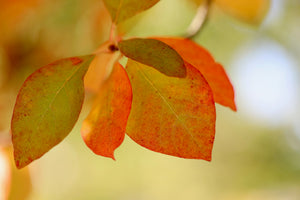
How To Use
Black Gum trees provide a unique and adaptable way to enhance your landscape. Consider these recommendations based on their distinctive traits:
Focal Point: Black Gum trees have a striking presence, making them an excellent choice as a focal point in your garden. Plant a single tree in an open space to highlight its graceful form and textured bark, or group several together for a dramatic visual effect.
Shade Tree: With a broad canopy, Black Gum trees offer excellent shade. Plant them near patios, decks, or seating areas to create a cool, relaxing outdoor space perfect for enjoying the shade.
Windbreak: The strong growth and dense foliage of Black Gum trees make them ideal for windbreaks. Plant them in a row to shield your garden or home from strong winds, providing a natural protective barrier.
Privacy Screen: Use the lush foliage of Black Gum trees to create a natural privacy screen. Plant them along property lines to establish an attractive, functional barrier that enhances both privacy and aesthetics.
Wildlife Habitat: Black Gum trees are a boon to biodiversity, attracting a variety of wildlife. Birds and animals are drawn to the seeds and the shelter these trees provide. Planting Black Gum trees can create a vibrant habitat, inviting the sights and sounds of nature into your outdoor space.
When choosing Black Gum trees for your landscape, consider their growth rate and environmental needs. Plant them in well-drained soil with full sun or partial shade. Their unique form and appealing features make Black Gum trees a valuable addition to any garden, enhancing both beauty and functionality.
Conclusion
Black Gum trees are a captivating and versatile addition to any landscape. Their striking presence, vibrant foliage, and ecological importance make them a popular choice for a variety of settings. By following recommended planting and care practices, you can enjoy the beauty and benefits of Black Gum trees, whether you’re creating a picturesque entryway or a cool backyard retreat. Whether showcased as a stunning focal point or integrated into a broader landscape design, Black Gum trees offer endless possibilities to elevate the charm of your outdoor space. With attention and care, you can cultivate a beautiful landscape that will provide lasting enjoyment for years to come.

